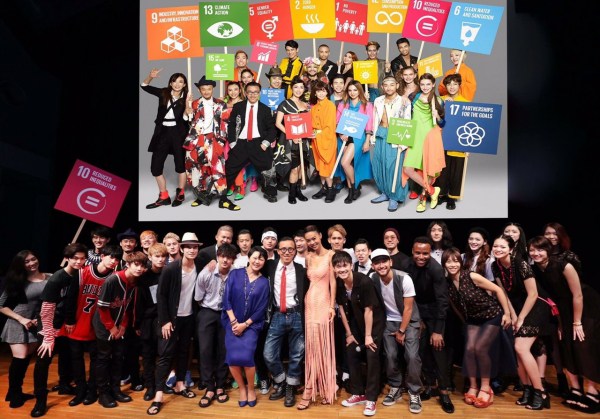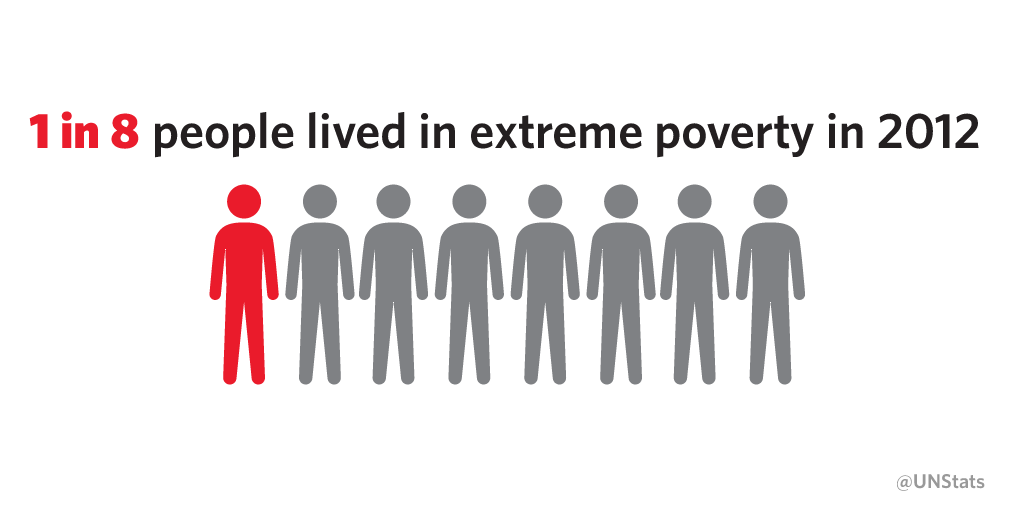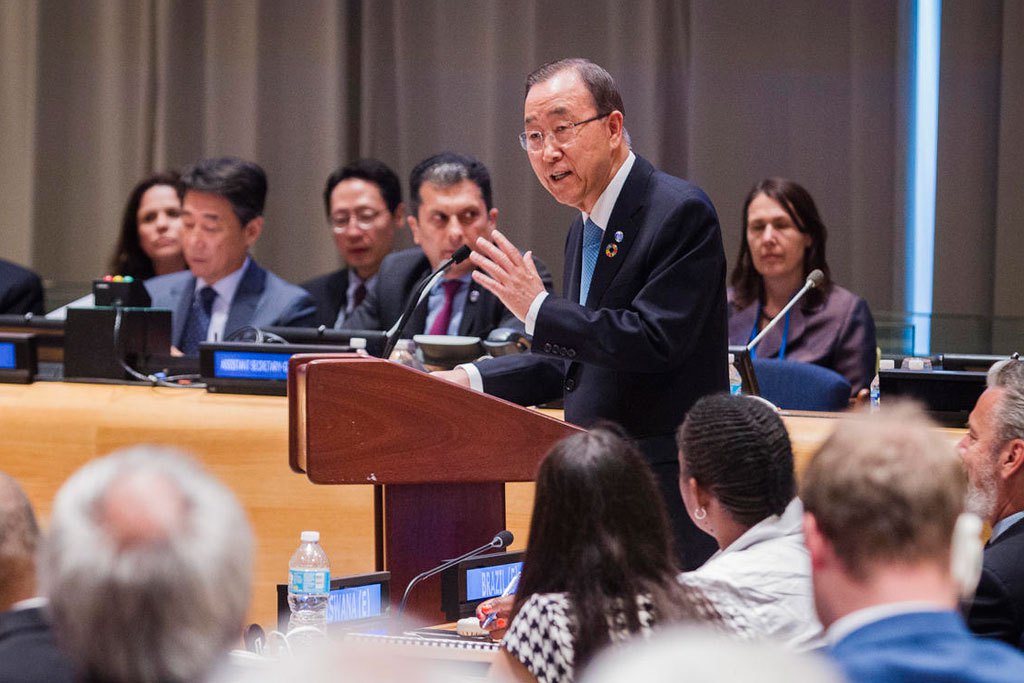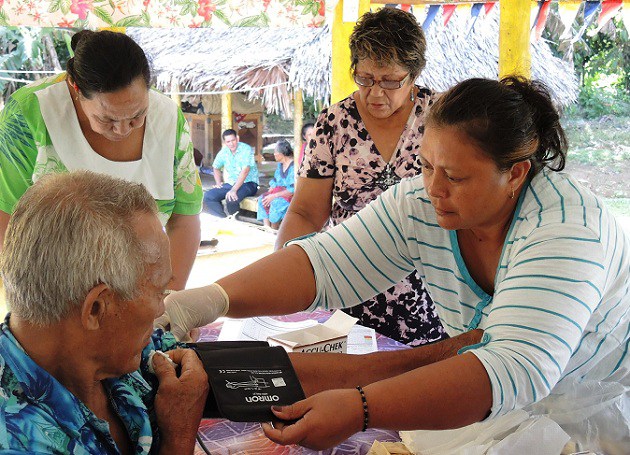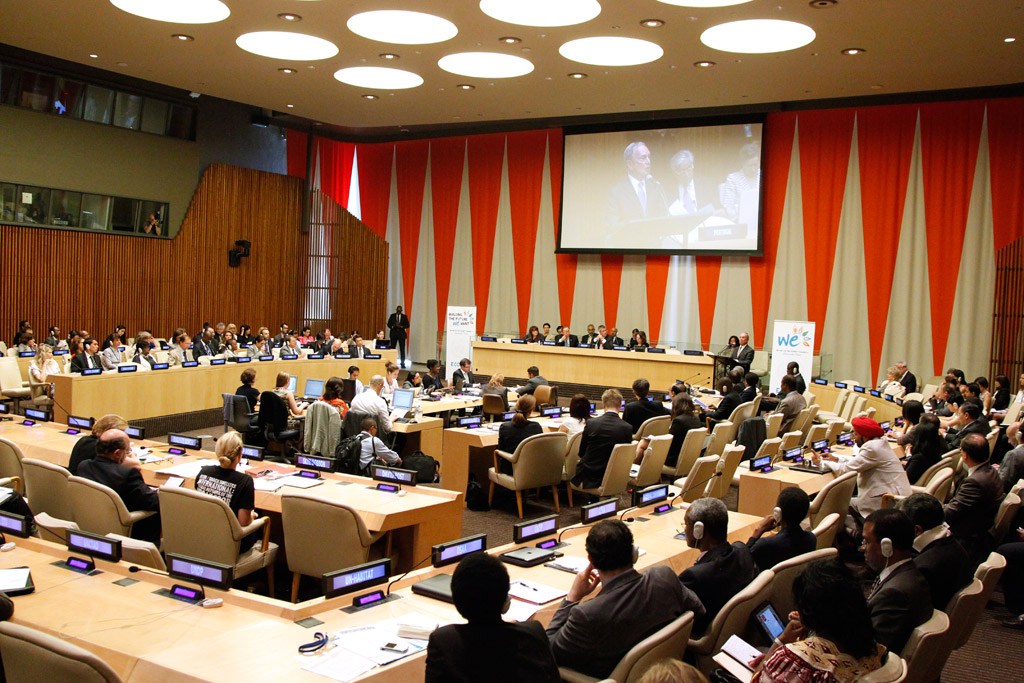 On 1 January 2016, the 17 Sustainable Development Goals (SDGs) of the 2030 Agenda for Sustainable Development — adopted by world leaders in September 2015 at an historic UN Summit — officially came into force. Over the next fifteen years, with these new Goals that universally apply to all, countries will mobilize efforts to end all forms of poverty, fight inequalities and tackle climate change, while ensuring that no one is left behind.
On 1 January 2016, the 17 Sustainable Development Goals (SDGs) of the 2030 Agenda for Sustainable Development — adopted by world leaders in September 2015 at an historic UN Summit — officially came into force. Over the next fifteen years, with these new Goals that universally apply to all, countries will mobilize efforts to end all forms of poverty, fight inequalities and tackle climate change, while ensuring that no one is left behind.
The SDGs build on the success of the Millennium Development Goals (MDGs) and aim to go further to end all forms of poverty. The new Goals are unique in that they call for action by all countries, poor, rich and middle-income to promote prosperity while protecting the planet. They recognize that ending poverty must go hand-in-hand with strategies that build economic growth and addresses a range of social needs including education, health, social protection, and job opportunities, while tackling climate change and environmental protection.
While the SDGs are not legally binding, governments are expected to take ownership and establish national frameworks for the achievement of the 17 Goals. Countries have the primary responsibility for follow-up and review of the progress made in implementing the Goals, which will require quality, accessible and timely data collection. Regional follow-up and review will be based on national-level analyses and contribute to follow-up and review at the global level.
Frequently Asked Questions
● Sustainable development calls for concerted efforts towards building an inclusive, sustainable and resilient future for people and planet.
● For sustainable development to be achieved, it is crucial to harmonize three core elements: economic growth, social inclusion and environmental protection. These elements are interconnected and all are crucial for the well-being of individuals and societies.
● Eradicating poverty in all its forms and dimensions is an indispensable requirement for sustainable development. To this end, there must be promotion of sustainable, inclusive and equitable economic growth, creating greater opportunities for all, reducing inequalities, raising basic standards of living, fostering equitable social development and inclusion, and promoting integrated and sustainable management of natural resources and ecosystems.
- No. The Sustainable Development Goals (SDGs) are not legally binding.
- Nevertheless, countries are expected to take ownership and establish a national framework for achieving the 17 Goals.
- Implementation and success will rely on countries’ own sustainable development policies, plans and programmes.
- Countries have the primary responsibility for follow-up and review, at the national, regional and global levels, with regard to the progress made in implementing the Goals and targets over the next 15 years.
- Actions at the national level to monitor progress will require quality, accessible and timely data collection and regional follow-up and review.
● Implementation and success will rely on countries’ own sustainable development policies, plans and programmes, and will be led by countries. The Sustainable Development Goals (SDGs) will be a compass for aligning countries’ plans with their global commitments.
● Nationally owned and country-led sustainable development strategies will require resource mobilization and financing strategies.
● All stakeholders: governments, civil society, the private sector, and others, are expected to contribute to the realisation of the new agenda.
● A revitalized global partnership at the global level is needed to support national efforts. This is recognized in the 2030 Agenda.
● Multi-stakeholder partnerships have been recognized as an important component of strategies that seek to mobilize all stakeholders around the new agenda.
● Governments will also develop their own national indicators to assist in monitoring progress made on the goals and targets.
● Chief statisticians from Member States are working on the identification of the targets with the aim to have 2 indicators for each target. There will be approximately 300 indicators for all the targets. Where the targets cover cross-cutting issues, however, the number of indicators may be reduced.
● The follow-up and review process will be informed by an annual SDG Progress Report to be prepared by the Secretary-General.
● The annual meetings of the High-level Political Forum on sustainable development will play a central role in reviewing progress towards the SDGs at the global level. The means of implementation of the SDGs will be monitored and reviewed as outlined in the Addis Ababa Action Agenda, the outcome document of the Third International Conference on Financing for Development, to ensure that financial resources are effectively mobilized to support the new sustainable development agenda.
● In order to achieve the Sustainable Development Goals (SDGs), substantial investment will be required, in both developed and developing countries. This agenda will require the mobilization of significant resources—in the trillions of dollars.
● But these resources already exist. There are far more than enough savings in the world to finance the new agenda. How to direct investment so that it supports sustainable development will be crucial for achieving our Goals.
● Resources need to be mobilized from domestic and international sources, as well as from the public and private sectors.
● Official development assistance is still necessary to help the countries most in need, including the least developed countries, to achieve sustainable development.
• Investments in sustainable development will help address climate change by reducing greenhouse gas emissions and building climate resilience.
• Conversely, action on climate change will drive sustainable development.
• Tackling climate change and fostering sustainable development are two mutually reinforcing sides of the same coin; sustainable development cannot be achieved without climate action. Conversely, many of the SDGs are addressing the core drivers of climate change.
● Building on the success and momentum of the MDGs, the new global goals cover more ground, with ambitions to address inequalities, economic growth, decent jobs, cities and human settlements, industrialization, oceans, ecosystems, energy, climate change, sustainable consumption and production, peace and justice.
● The new Goals are universal and apply to all countries, whereas the MDGs were intended for action in developing countries only.
● A core feature of the SDGs is their strong focus on means of implementation—the mobilization of financial resources—capacity-building and technology, as well as data and institutions.
● The new Goals recognize that tackling climate change is essential for sustainable development and poverty eradication. SDG 13 aims to promote urgent action to combat climate change and its impacts.
Related videos
VIDEO: The Sustainable Development Summit: Building the 2030 Agenda
Now, at the dawn of 2016, we're presented with an unprecedented opportunity to bring the world together to improve the lives of people everywhere through the 17 #GlobalGoals to improve our world. Follow us at @GlobalGoals
News
Tokyo art scene collaborates for SDGs
Love 1980’s pop music and the Sustainable Development Goals? The United Nations Information Centre in Tokyo (UNIC Tokyo) is raising awareness of the SDGs with a new music video featuring more than 100 Japanese celebrities dancing […]
First report card maps scope of SDGs progress
Report reveals that benefits of development are not equally shared by all
New York, 19 July 2016 – As the world begins the implementation of the 2030 Agenda for Sustainable Development and its 17 Sustainable Development […]
Countries need to be reminded they are built on diversity, says UN Deputy Secretary-General
United Nations Deputy Secretary-General Jan Eliasson today called for an alternative narrative on migration, where human mobility is seen as a positive development and a driver for economic prosperity and social progress.
UN chief launches first report to track Sustainable Development Goals
Launching the first-ever Sustainable Development Goals report on the new global development agenda adopted last year, Secretary-General Ban Ki-moon today said that the 15-year undertaking is “off to a good start” but will require all parts of the UN family and its partners to work together.
UN health agency urges speeding up efforts on noncommunicable diseases
Governments must make greater efforts to protect people from heart disease, cancers, diabetes and lung disease – the leading causes of death among the elderly – the United Nations health agency today said.
UN officials spotlight need to move from commitments to results on Global Goals
Every country must accelerate the implementation pace of the 'ambitious and transformative' development agenda adopted by United Nations Member States nearly one year ago, by boosting efforts to overcome persistent challenges, new obstacles and unforeseen setbacks in today's turbulent world, the UN Deputy Secretary-General Jan Eliasson today declared.


